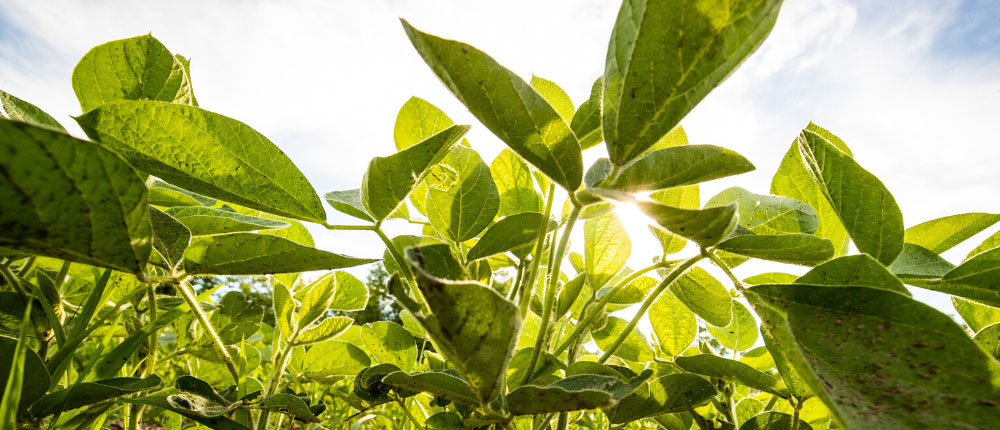Frogeye leaf spot (FLS), a common threat to soybean yields, varies in its impact seasonally due to changing environmental conditions. Disease development thrives in warm and humid soybean canopies at temperatures of 75–85°F, exacerbated by prolonged leaf wetness from rain, dew, or irrigation. These conditions promote fungal spore germination, which can reinfect neighboring soybeans and cause severe defoliation of a field within a single season. The risk of yield loss increases with the persistence of infected soybean residue and continuous cropping without rotation.
To mitigate the impact of FLS, farmers can adopt strategies such as planting resistant varieties, practicing crop rotation, and using fungicides. Employing strategic agronomic management and timely fungicide applications significantly reduces the potential impact of frogeye leaf spot in soybean fields.
Instead of waiting for the disease to show up and potentially compromising current and future growing seasons, we recommend making a specific plan about when and how you’ll approach pressure from fungi like FLS this year. Maximizing the impact of a fungicide application depends on an understanding of field history, scouting, and the timing of application.

Frogeye leaf spot can be identified by eye-like circular or angular lesions on leaves. (BASF employee, Albre Brown, Ph.D. Technical Marketing Manager)
Yield loss from frogeye leaf spot
In 2022, FLS was responsible for an estimated 4 million bushels lost.1 While these small spots may not seem aggressive or threatening at first, they have a compounding effect. Each spot eats away at the plant’s ability to grow, and each spot has the potential to spread the infection. If left unchecked, the infection can spread to the seeds, causing yield loss. Infected plant material will then overwinter in your field, leading to potential losses the following year. As temperatures around the world continue to rise, FLS is spreading into new territories in the U.S., with estimated yield losses of around 35%.2
Frogeye leaf spot control
Your strategy for treating and preventing frogeye leaf spot in your fields should depend on your goals, risk levels, and the severity of the infection you’ve seen so far. Preventive strategies should revolve around careful seed selection with a trusted expert from your seed retailer, a nearby extension office agent, or your regional BASF representative. Meanwhile, treatment will likely require a holistic strategy that incorporates seed selection, fungicide application, and crop rotation.
For proven protection in a soybean fungicide, growers are choosing and recommending Revytek® fungicide. Revytek fungicide contains three effective modes of action to battle challenging soybean diseases, including resistant frogeye leaf spot. It provides superior performance with strong curative activity, fast uptake and long-lasting residual to protect yield potential.
The ideal window for disease management is between R2-R4 soybean growth stages. The period of foliar fungicide application with the highest rate of success is during the early R3 stage. Ideally, you’ll want to apply at least two to three modes of action to effectively manage pathogen populations that have developed resistance to older chemistries.
With diseases like FLS under control, you’ll be free to reap the benefits of soybeans thriving in warm, humid weather. Just be sure to check in often for updates on evolving diseases and resistances.
- “Soybean Disease Loss Estimates from the United States and Ontario, Canada - 2022,” Allen, T., Mississippi State University; Mueller D., Iowa State University; Sisson A, Iowa State University, 2023. https://cropprotectionnetwork.org/publications/soybean-disease-loss-estimates-from-the-united-states-and-ontario-canada-2022
- “Fungicide Resistance and Management of Frogeye Leaf Spot of Soybean in Nebraska,” A. Mane, D. Mangel, S. Everhart, T. Jackson-Ziems, University of Nebraska-Lincoln, 2022. https://cropwatch.unl.edu/2022/fungicide-resistance-and-management-frogeye-leaf-spot-soybean-nebraska
Always read and follow label directions. Revytek is a registered trademark of BASF. Copyright 2024 BASF Corporation. All rights reserved.




